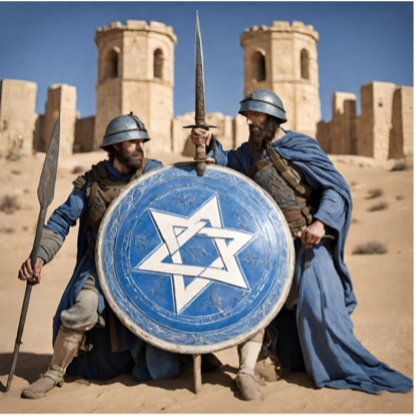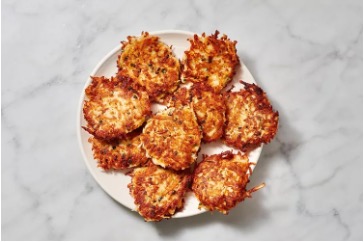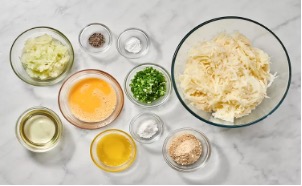Understanding Chanukah: A Very Brief Overview
Chanukah, also known as the Festival of Lights, holds a profound significance in Jewish history and tradition. This guide aims to provide comprehensive insights into the origins, religious and cultural connections, as well as practical instructions for observing and celebrating Chanukah within the context of a modern Orthodox identity.

Origins: Chanukah commemorates the historical events surrounding the Maccabean Defence, a crucial chapter in Jewish history during the Second Temple period. Led by the valiant Judah Maccabee, a small band of Jewish warriors overcame the mighty Syrian-Greek forces of the emperor Antiochus that sought to defile the Second Temple and destroy the Jewish people. The rededication of the Temple, marked by the miracle of the oil lasting eight days, symbolizes the resilience of the Jewish spirit against oppression.
Observances:
- Menorah Lighting
- Place the menorah in a prominent location, such as a window, symbolizing the public proclamation of the miracle.
- Add one candle to the daily total (1 the 1st night, 2 the 2nd night, etc.) starting on the far right.
- Begin lighting the candles from left to right (light the newest candle 1st) using the shamash (helper candle).
- Recite the blessings:
- All Nights: “Baruch atah Adonai, Eloheinu Melech ha’olam, asher kidishanu b’mitvotav, v’tzivanu lehadlik ner shel chanukah.”
- All Nights: “Baruch atah Adonai, Eloheinu Melech ha’olam, she’asa nisim la’avoteinu bayamim haheim bazman hazeh.”
- First Night: “Baruch atah Adonai, Eloheinu Melech ha’olam, shehecheyanu v’kiyemanu v’higianu lazman hazeh.”

- Chanukah Activities:
- Dreidel Game: Engage in the traditional dreidel game, assigning actions or prizes to each letter (Nun, Gimel, Hey, Shin).
- Family Candle Lighting: Involve the entire family in the candle lighting ritual, emphasizing the unity and strength of the Jewish household.
- Study Sessions: Reflect on the historical significance of Chanukah through study sessions on Jewish history, emphasizing the values of courage, faith, and perseverance.
- Traditional Foods:
- Latkes (Potato Pancakes): Crispy potato pancakes symbolize the miracle of the oil and are traditionally served with applesauce or sour cream.
- Sufganiyot (Jelly Donuts): Indulge in sweet, jelly-filled donuts, highlighting the joyous nature of the festival.
Cultural Connections: Chanukah extends beyond its historical and religious roots to become a celebration of Jewish culture and identity. Emphasize the values of freedom, community, and the enduring spirit that has characterized the Jewish people throughout history.
Conclusion: As we kindle the lights of the Menorah, let us connect with the rich history and values embedded in this festival. Chanukah serves as a powerful reminder of the triumph of light over darkness, faith over adversity, and the unbroken spirit of the Jewish people. May the celebration of Chanukah strengthen our Jewish identity and inspire generations to come. Chag Sameach!

No Chanukah celebration is complete without some great, homemade potato latkes! Here is an easy-to-follow recipe that you can use at home.
Potato Latkes Recipe

Yield: 5 servings (to make a larger batch, multiply recipe ingredients according to desired yield)
Ingredients
- 2 1/2 pounds baking potatoes, peeled and coarsely shredded on a box grater
- 1 medium onion, coarsely shredded on a box grater
- 2 large eggs, beaten
- 1/2 cup finely chopped scallions
- 1/4 cup matzo meal (some people prefer flour)
- 3 tablespoons unsalted butter, melted and cooled slightly
- 2 teaspoons kosher salt
- 1/2 teaspoon black pepper
- 1/2 teaspoon baking powder
- Vegetable oil, for frying (for a healthier option, use avocado oil or olive oil at a lower frying temperature)
Toppings for your finished latkes:
- Applesauce, for serving
- Sour cream, for serving
If you want to get fancy:
- Smoked salmon, for serving
- Salmon roe, for serving
Directions

- Gather the ingredients.
- In a colander set over a large bowl, toss the potatoes with the onion and squeeze dry. Let the potatoes and onion drain for 2 to 3 minutes, then pour off the liquid in the bowl, leaving the starchy paste at the bottom.
- Add the potatoes and onion, along with the eggs, scallions, matzo meal, butter, salt, pepper, and baking powder; mix well.
- In a large skillet, heat an 1/8-inch layer of oil until shimmering. Spoon 1/4-cup mounds of the latke batter into the skillet about 2 inches apart and flatten slightly with a spatula.
- Fry the latkes over moderately high heat, turning once, until golden and crisp, 5 to 7 minutes.
- Transfer the latkes to paper towels to drain, then transfer to a platter. Repeat to make the remaining latkes, adding more oil to the skillet as needed. Lay your finished latkes in a single layer on a cookie sheet and keep them warm in an oven preheated to 250 degrees to keep them warm while you finish frying the rest. Serve with applesauce, sour cream, smoked salmon, and salmon roe.
- Eat and enjoy!
- You can reheat latkes that were made in advanced (same or next day max) or leftover, in a 350-degree oven. Simply lay them out on a cookie sheet in a single layer and until latkes are warm through their centers.
